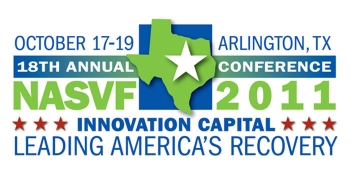Guest blog post by by
John Fernandez, Assistant Secretary of Commerce for Economic Development, Department of Commerce
The Obama administration is collaborating with the private sector in an unprecedented way to promote American innovation, ignite entrepreneurship, and spur small business development to get the economy moving and put people back to work.
And we are seeing results. Private sector payrolls increased by 137,000 in September. And despite a slowdown in economic growth from substantial headwinds experienced throughout the year, the economy has added private sector jobs for 19 straight months, for a total of 2.6 million jobs over that period. While the economy is growing modestly, we understand that it is not fast enough for Americans who are struggling to make ends meet.
That is why it is more important than ever for the federal government to work with industry to create new jobs.Today, I had the pleasure of addressing seed and venture capitalists during the annual conference of the National Association of Seed and Venture Funds. It was a great opportunity to hear directly from venture capitalists, angel investors, and business leaders about some of the opportunities and challenges to accelerating regional economic ecosystems. We discussed the importance of expanding early stage access to capital and the need to invest in research and development of new innovative ideas.
The conference was hosted by the Innovation Center, a public-private partnership of the Arlington Chamber of Commerce and the University of Texas at Arlington. The Center facilitates the integration of industry, academic, and government research with venture capital and talent and know how. There are dynamic things taking place in the region. In the North-Central Texas area, venture capitalists and angel investors, universities and entrepreneurs are collaborating to create a destination for innovation and new industry. This is the type of collaboration that will help fuel our economy and increase economic and job growth.
There are millions of people across America still looking for a way in and a way up in this economy. That is why President Obama’s American Jobs Act will take the steps necessary to put workers back on the job.
Several private forecasters, including Moody’s and Macroeconomic Advisers, have confirmed that the plan will materially improve economic growth and employment next year. For example, Moody’s Mark Zandi released a report stating that “The plan would add 2 percentage points to GDP growth next year, add 1.9 million jobs, and cut the unemployment rate by a percentage point.”
The president’s plan will also help entrepreneurs and small businesses get access to capital, grow and hire by expanding Small Business Administration-backed loan limits, cutting red tape and reforming our patent system. It will cut in half the taxes paid by businesses on their first $5 million in payroll, targeting the benefit to the 98 percent of firms that have payroll below this threshold.
The plan is a set of common sense proposals and a smart approach to investing. The focus is on smart money.
Smart money looks to leverage other capital, including private capital. Smart money is competitive–requiring a concrete strategy and plan–and real buy-in in the community as an essential prerequisite. Smart money looks to do more with less through improved coordination and leveraging assets. Smart money looks to obtaining the best return on investment.
We have to approach our investments in some of the same ways a venture capitalist would–always looking for a good risk-return balance and a significant return on our investment.
The president has made historic investments to expand broadband infrastructure to rural communities throughout America. He passed 17 different tax cuts for small businesses, including tax credits for hiring new workers and providing employee healthcare, and a new provision allowing businesses large and small to expense 100 percent of their new investments through the end of 2011. He’s made substantial new investments in community colleges to make sure businesses have workers with the skills they need. And he’s invested billions in the type of cutting-edge R&D in areas like bioscience and clean energy that are often too risky or too expensive for the private sector to handle alone.
The public and private sectors both have a role in helping to grow the nation’s economy. Venture capitalists and angel investors can fund new ideas and research. Business leaders can mentor a budding entrepreneur who has an original idea and the will to execute, but could benefit from the guidance of an experienced owner or operator. Philanthropists can expand education and training for ambitious students at underserved schools and community colleges. Universities can accelerate the transition of scientific breakthroughs from the lab to the marketplace.
We must continue to partner and work together to support innovators, entrepreneurs and small businesses, save and create jobs, and increase America’s global competitiveness.



Comments Closed
Due to increased spam, comments have been closed on this content. If you wish to comment about the content, we encourage you to email webmaster@doc.gov.